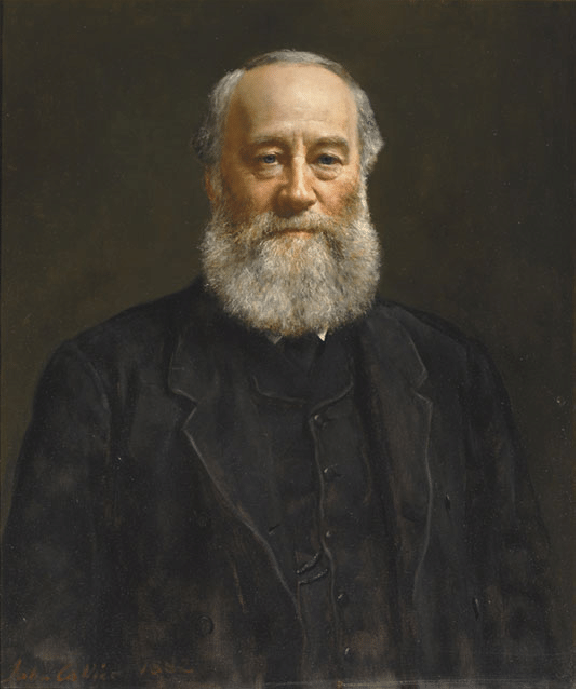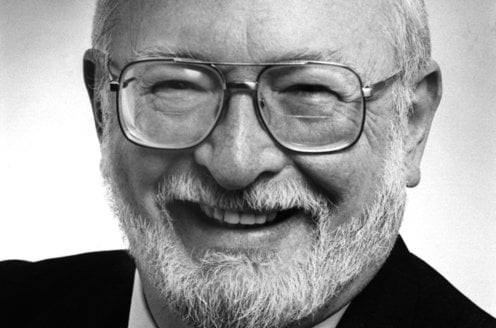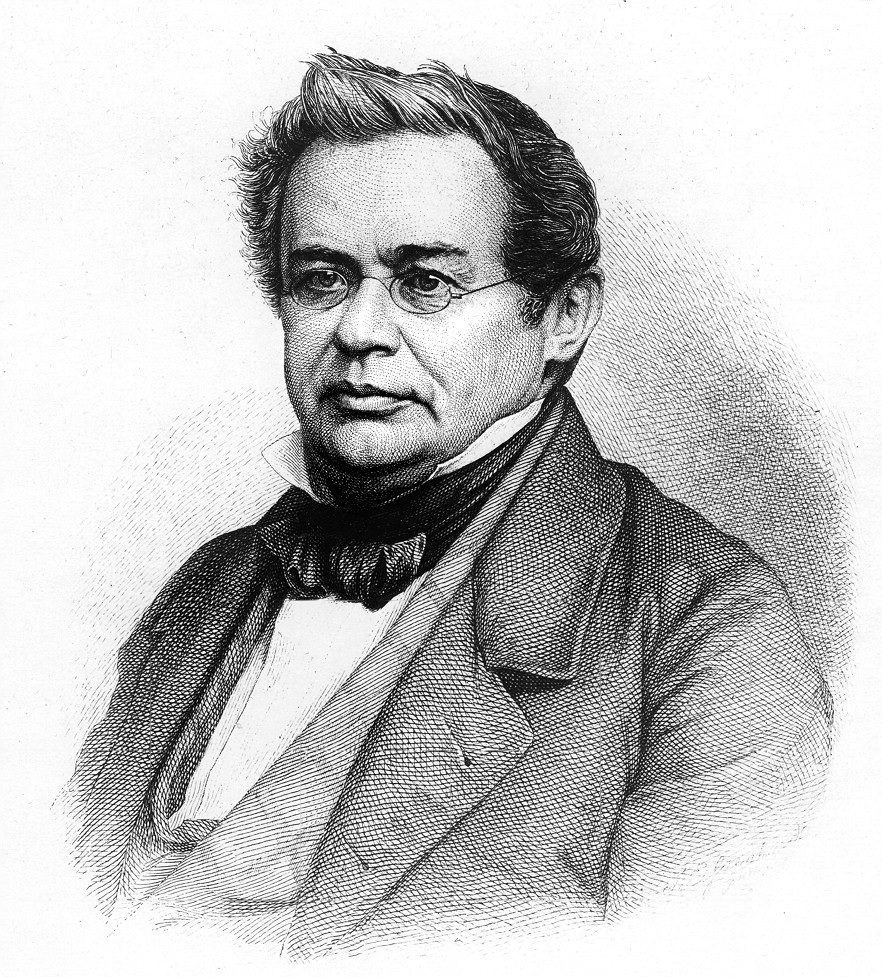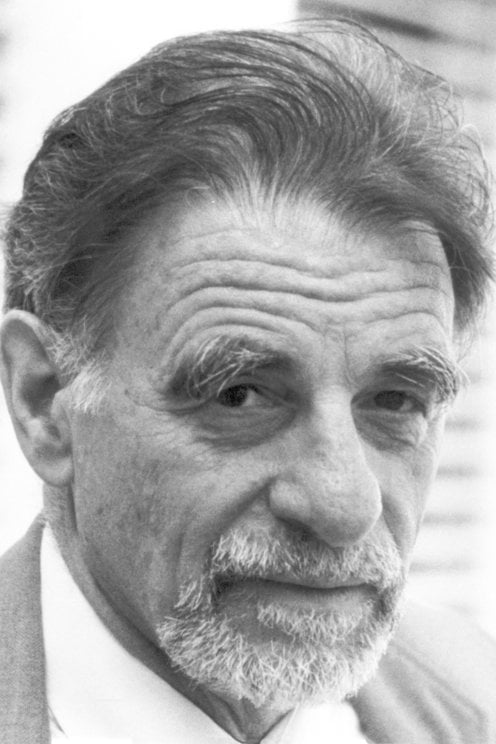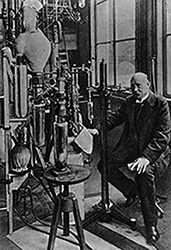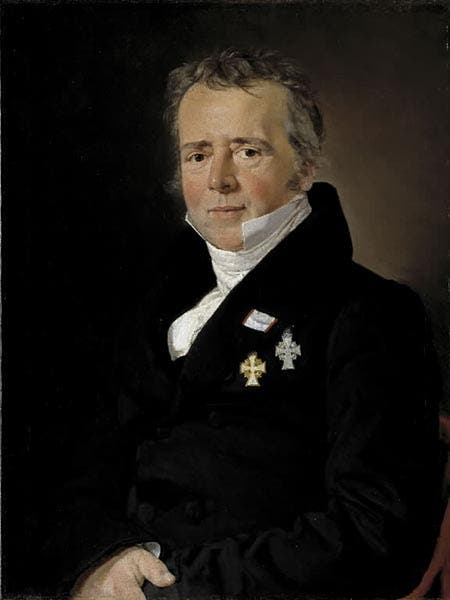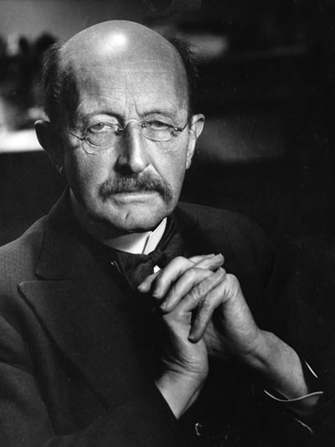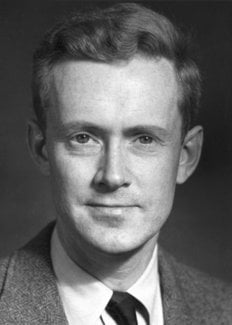It all started like this - Pioneers
Read more +
Early Life and Education:
Born in Salford, Lancashire on December 24, 1818, James Prescott Joule’s father, Benjamin Joule was a rich brewer, and his mother was Alice Prescott. James was mostly home schooled due to being delicate in health. He studied arithmetic and geometry under John Dalton at the Manchester Literary and Philosophical Society. He was later taught by famous scientist and lecturer, John Davies.
At the age of fifteen he started working in the brewery in addition to his studies. James enjoyed experimenting with electricity and a servant girl became unconscious as he inadvertently gave her electric shocks.
Contributions and Achievements:
Joule managed the family brewery from 1837 to 1856 and he carried out experiments in laboratories in his house and in the brewery. His first experiments concerned electric motors with a view to replacing the steam engines in the brewery with electric ones. This led him to discovering “Joules Law” in 1840.
He established a relationship between the flow of current through a resistance and the heat generated. Joule’s law states that the amount of heat per second that develops in a wire carrying a current is proportional to the electrical resistance of the wire and the square of the current.
P = I2R where P = Power, I = Current and R = Resistance
Joule then carried out experiments using a paddlewheel and calorimeter and in 1843 Joule announced his determination of the amount of work required to produce a unit of heat (the mechanical equivalent of heat).
The results his experiments were fully described in his famous 1845 paper “On the Mechanical Equivalent of Heat” and they established that heat and mechanical work are both forms of energy. His efforts became the cornerstone of the theory of conversation of energy (the First Law of Thermodynamics).
He collaborated with Lord Kelvin on the formulation of the absolute scale of temperature. In 1852 they discovered the Joule-Thomson effect, showing that that when gas is expanded, without production of work, its temperature falls. This concept was later used in refrigeration.
Joule also carried out extensive research on magnetostriction; a property of ferromagnetic materials that makes them modify their shapes when exposed to a magnetic field. He was the first scientist to identify this property in 1842 during an experiment with a sample of nickel.
He is also credited with the first-ever calculation the velocity of a gas molecule.
The derived unit of energy or work, the Joule, (J) is named after him.
Joule was elected to the Royal Society of London in 1850 and he received the Royal Medal in 1852 for his paper “on the mechanical equivalent of heat”.
In 1870 he was awarded the prestigious Copley Medal of the Royal Society “for his experimental researches on the dynamical theory of heat”. He also served as the president of the British Association for the Advancement of Science.
Read more +
"Paul Lauterbur's work is perhaps the most significant medical diagnostic discovery of the 20th century," said Nancy Cantor, the chancellor of the Urbana campus. "Every patient who undergoes a non-invasive medical imaging procedure should thank Paul. His work has led to revolutionary insights into the functions of the brain and the workings of the human body."
Lauterbur was among the first scientists to use nuclear magnetic resonance in the studies of molecules, solutions and solids. He was the first researcher to produce an image with NMR and apply the technology to medicine. This led to the development of the magnetic resonance imaging scanner, which has had a revolutionary impact on the medical profession.
Magnetic resonance imaging works by placing the body in a powerful magnetic field that causes the nuclei of atoms to align. Pulsing radio waves cause them to resonate, sending out radio signals. The signals are collected, interpreted by a computer and assembled into a picture somewhat similar to an X-ray image.
MRI scanners allow medical specialists to safely diagnose diseases of the head and neck, spinal cord, pelvic organs, heart and joints without using invasive surgery or potentially harmful X-rays.
Lauterbur is a Center for Advanced Study professor of chemistry and holds appointments in the bioengineering program, the Center for Biophysics and Computational Biology, the department of medical information sciences in the College of Medicine at Urbana-Champaign and is a Distinguished University Professor at the University of Illinois at Chicago College of Medicine.
Nine Nobel laureates have served on the U. of I. faculty.
Lauterbur joined the U. of I. faculty in 1985, after 22 years at the State University of New York at Stony Brook. He earned a bachelor's degree in chemistry in 1951 from the Case Institute of Technology in Cleveland, and a doctorate in chemistry in 1962 from the University of Pittsburgh.
Among his other awards are the National Academy of Sciences Award for Chemistry in Service to Society (2001); the Kyoto Prize from the Inamori Foundation of Japan in recognition of his lifelong research accomplishments in advanced technology (1994); the Order of Lincoln Medallion, the state of Illinois' highest award (1992); the Franklin Institute of Philadelphia's Bower Award for Achievement in Science (1990); the National Medal of Technology (1988); the National Medal of Science (1987); and the Albert Lasker Clinical Research Award (1984). He is a member of the National Academy of Sciences, and a Fellow of the American Association for the Advancement of Science and the American Physical Society.
Read more +
Lenz was born in Dorpat (nowadays Tartu, Estonia), at that time in the Governorate of Livonia in the Russian Empire. After completing his secondary education in 1820, Lenz studied chemistry and physics at the University of Dorpat. He traveled with the navigator Otto von Kotzebue on his third expedition around the world from 1823 to 1826. On the voyage Lenz studied climatic conditions and the physical properties of seawater. The results have been published in "Memoirs of the St. Petersburg Academy of Sciences" (1831).
After the voyage, Lenz began working at the University of St. Petersburg, Russia, where he later served as the Dean of Mathematics and Physics from 1840 to 1863 and was Rector from 1863 until his death in 1865. Lenz also taught at the Petrischule in 1830 and 1831, and at the Mikhailovskaya Artillery Academy.
Lenz had begun studying electromagnetism in 1831. Besides the law named in his honor, Lenz also independently discovered Joule's law in 1842; to honor his efforts on the problem, it is also given the name the "Joule–Lenz law," named also for James Prescott Joule.
Lenz eagerly participated in development of the electroplating technology, invented by his friend and colleague Moritz von Jacobi. In 1839, Lenz produced several medallions using electrotyping. Along with the electrotyped relief produced by Jacobi the same year, these were the first instances of galvanoplastic sculpture.
Lenz died in Rome, after suffering from a stroke.
A small lunar crater on the far side of the moon is named after him.
Read more +
Maxwell’s first scientific paper appeared when he was just 14, which suggests that he was a terrifying mathematical prodigy. In fact, Maxwell was a very clever boy but by no means exclusively scientific. Indeed, a poem of his was published in the Edinburgh Courant six months before his first scientific paper. He wrote the latter after meeting the decorative artist D R Hay, who was searching for a way to draw ovals. The 14-year-old Maxwell generalized the definition of an ellipse and succeeded in producing true ovals identical to those studied in the 17th century be René Descartes. Maxwell’s father showed the method to James David Forbes, an experimental physicist at Edinburgh University, who realized that it was correct. Forbes then presented the paper on Maxwell’s behalf at a meeting of the Royal Society of Edinburgh – a remarkable achievement for someone so young.
Student days
Maxwell began his studies at Edinburgh University in 1847 at the age of 16. He moved to Cambridge in 1850 to take the mathematical Tripos, which lasted for three years and a term. This unusually long undergraduate career, which resulted from the different ages at which students in England and Scotland then went to university, proved entirely beneficial for Maxwell. At Edinburgh he gained a broad education centred on philosophy, while Cambridge gave him an excellent training in applied mathematics and the most gruelling examination system the wit of man has devised. At both, he encountered first-class minds.
The first grand unification
On 5 January 1865, while at King’s, Maxwell ended a letter to his cousin Charles Cay about his latest scientific work with the casual remark, “I have also a paper afloat containing an electromagnetic theory of light, which, till I am convinced to the contrary, I hold to be great guns.” The judgment was correct. More than a new theory, this was a new kind of theory that entailed completely new views of scientific explanation, unifying as it did three different realms of physics – electricity, magnetism and light. This unification of nature’s basic forces is a goal that physicists are still working on today.
Before Maxwell there had been huge progress in optics and electromagnetism but troubling questions remained in both fields. The wave theory of light, originated by Thomas Young and Augustin Fresnel, was in one sense a marvellous success, leading to a flood of new discoveries. But in another way it was a worrying failure. At least 11 alternative theories existed, each of which tried to explain Fresnel’s and other formulae in terms of an underlying ether, but, as Stokes proved devastatingly in 1862, every one of them was flawed. Part of the miracle of Maxwell’s theory was that it almost magically swept the troubles with those theories away.
A different issue hampered electromagnetism, which had been discovered by the Danish physicist Hans Christian Oersted in 1820. Oersted had found that a compass needle brought near a current-carrying wire pointed at right angles to the direction of the current, which involved a twisting motion that could not be explained by any other force. Two explanations emerged. Ampère sought to reinterpret the twisting as an attraction of a more complex kind, while Faraday, who had shown that magnetism, the electric current and the resultant force on a body act perpendicularly to each other, took Oersted’s finding as an irreducible new fact.
Faraday saw the “lines of force”, which are revealed by sprinkling iron filings on a sheet of paper held over a magnet, not only as geometrical lines but also, more daringly, as physical lines rather like stretched elastic bands with an extra sideways repulsion. For him, these physical stresses could be used to explain magnetic force. Maxwell developed both aspects of Faraday’s thinking, devising in his second paper in 1861 an “ether” full of tiny “molecular vortices” aligned with the lines of force. Like tiny spinning Earths, Maxwell reasoned, each vortex shrinks axially and expands sideways, giving just the stress patterns that Faraday had hypothesized (see image “mechanical model”). To explain how the vortices rotate, Maxwell envisioned smaller “gearwheel particles” meshing with the vortices.
While emphasizing that this idea, especially the gearwheel particles, was speculative and not a real physical model, he nevertheless saw it as a useful way to understand electromagnetism. In a wire, the particles are free to flow and form an electric current. In space, they serve as counter-rotating idle wheels between vortices to make successive ones turn in the same direction. This machinery gave the right result; Maxwell had “explained” magnetic force in Faraday-like terms.
Maxwell addressed the electric force – the crux of his discussion – after submitting two papers on the magnetic force for publication. The key issue was where the energy resides. Previous theories had assumed that the energy was located at or on magnets or electrically charged bodies. In Maxwell’s theory, however, the magnetic energy was in the surrounding space, or “field”, as he called it. The energy was, in other words, the kinetic energy of the vortices.
Drawing on insights from William Thomson (the future Lord Kelvin), Maxwell proceeded to make his ether elastic, with the electric force being the result of the potential energy needed to distort the ether. Intrigued by the fact that an elastic ether ought to transmit waves, Maxwell decided to calculate the speed at which they would move in terms of electric and magnetic forces, doing the calculations while at Glenlair.
On returning to London, he looked up the ratio for magnetic to electric forces, which had been determined experimentally in 1858 by the German physicist Wilhelm Weber. Weber had measured the ratio because it played an important, but not well understood, part in his own theory of electromagnetism. A velocity appeared in his theory also, but with a different numerical value that had no obvious physical meaning. Maxwell plugged Weber’s force ratio into his equations and discovered to his utter astonishment that the velocity exactly equalled the speed of light, which was then known experimentally to an accuracy of 1%. With excitement manifest in italics, he wrote, “We can scarcely avoid the inference that light consists in the transverse undulations of the same medium which is the cause of electric and magnetic phenomena.”
Having made this epoch-making discovery, Maxwell moved from his visionary model to hard fact. In a paper that has a good claim to be the foundation of dimensional analysis, in 1863 he proved that the ratio of the magnetic and electric forces indeed contains a velocity that equals the speed of light, c. The importance of this result to physics is hard to overstate. Before Maxwell, c was just one velocity among many. Now it was privileged, pointing the way forward to Einstein and relativity.
Maxwell’s vortex-ether began as an attempt at a mechanical explanation of Faraday’s magnetic stresses. Another person might have been tempted to improve and refine it. Maxwell saw that no such effort was necessary. He had by now assembled a series of equations relating electric and magnetic quantities; he could deduce wave propagation from them. Instead of explaining electromagnetism or light, he had connected these two apparently different classes of phenomena using equations that took two forms. The first, which appeared in his 1865 paper and again in his Treatise, consisted of eight groups of equations. The second, in 1868, contains the four equations that we now know as “Maxwell’s equations”. The differences are somewhat technical: the eight equations include the concept of a “vector potential” and the incorrectly named “Lorentz force law”. (Devotees of Ockham’s razor should notice a remark by Maxwell in his Treatise that “to eliminate a quantity which expresses a useful idea would be a loss rather than a gain in this stage of our inquiry”.)
Maxwell’s theory predicted many new phenomena, such as radiation pressure. But its most remarkable consequence – as Maxwell at once realized – was that it pointed to the existence of an electromagnetic spectrum. This “great storehouse of nature” might contain other radiation of higher and lower frequencies, a thought that was vindicated over the next 30 years with the discovery of radio waves, X-rays and gamma radiation. As for relativity, Maxwell introduced Hamilton’s word, in the way that physicists now understand it, in his small book Matter and Motion of 1877. Poincaré read the work; Einstein learned of it from Poincaré; and the rest is history.
Maxwell’s legacy
When Einstein visited Cambridge in the 1920s, someone remarked, “You have done great things but you stand on Newton’s shoulders.” His reply was, “No, I stand on Maxwell’s shoulders.”
He was correct, but much else in modern physics also rests on Maxwell. It was after all Maxwell who introduced the methods that underlie not only Maxwell–Boltzmann statistics but the quantum-mechanical Fermi–Dirac and Bose–Einstein statistics governing photons and electrons. It was even he, in two innocent-seeming discussions in the 1870s, who first emphasized what we now call the “butterfly effect” – the fact that tiny differences in initial conditions can produce huge final effects, the starting point of chaos theory. In a similar vein, Maxwell’s scientific contributions have had dramatic effects on the future course of physics, notably the quest to unify nature’s fundamental forces. Sadly Maxwell died of cancer on 5 November 1879 and never lived to see the applications of radio or the demystifying of equipartition. But the power of his scientific insights lives on.
Read more +
In 1912, he sought consolation in research. With great ambition and hard work, that same year he succeeded in entering the electricity subdivision in the science department of the PTR, where, at the request of its president, Emil Warburg, he introduced the liquefaction of hydrogen. In the same year he put into operation a Nernst-type liquefaction apparatus manufactured by the Hoenow Company in Berlin. His first works were based on the study of the optical characteristics of liquid hydrogen and the measurements of the electrical and thermal conductivity of copper at temperatures between 20 and 375K.
In 1921 at the PTR he continued his low-temperature studies with the measurement of the thermal and electrical conductivity of metals such as lithium. In collaboration with the Linde Company (Munich) and with the support of the Emergency Association of German Science, he prepared the installation of helium liquefaction equipment in accordance with the Leiden method using precooled hydrogen. On 7 March 1925 Meissner succeeded in liquefying about 200 cc of helium that he had separated from a heliumneon mixture produced by Linde. Thus, besides the laboratories in Leiden (Kamerlingh Onnes, since 1908) and Toronto (John C. McLennan, since 1923), there was now a third laboratory where temperatures as low as about 1.5K were available for experiments. Meissner wanted to find out whether all metals could become superconductive simply by being at a low enough temperature and in a pure enough state. He studied monocrystalline filaments of gold, zinc, and cadmium, as well as polycrystalline iron, platinum, nickel, silver, and cadmium. Neither a high degree of purity nor the most uniform crystal structure led to superconductivity at temperatures as low as 1.3K.
According to the plans of the Ministry of the Interior and the Emergency Association of German Science, a large cryogenics institute was to be built in Germany in the mid 1920’s; the nation’s major centers for physics. Berllin and Göttingen, were being discussed as possible sites. Finally Berlin was chosen, not only because Meissner had already built a hydrogen liquefaction unit at the PTR and was just about to install a helium liquefier there, but also because of Max Planck’s influence. In 1927 the new cryogenics laboratory, which was directly under the control of the president of the PTR, was inaugurated. The possibility of numerous openings for guest researchers was welcomed by scientists at the university and in industry alike.
In the new cryogenics laboratory Meissner and his colleagues studied a great number of elements for superconductivity; in 1928 they discovered the sixth superconductive element known at that time: tantalum, used in the filaments of incandescent light bulbs. It was the first superconducting element in group V of the periodic system. Further elements that Meissner discovered to be superconductive were thorium, titanium, and vanadium. Copper sulfate was also found to lose its resistance at low enough temperatures. It was the first time that a chemical compound had become superconductive: moreover, one of its components was an insulator. This result led to systematic studies on further compounds and alloys, among which carbides, especially niobium carbide, displayed superconductive properties even at about 10K—that is, at a temperature scientists had already been able to achieve using solid-state hydrogen.
Meissner conducted further experiments to shed light on the nature of superconductivity, studying currents in superconductive metals. On this subject, which to him was closely related to the magnetic behavior of superconductors, he remained in close contact with Max von Laue, who had been a the-oretical physicist at the PTR since 1925 and was available to experimenters for consultation half a day per week, In order to answer the question discussed by many physicists—whether a current in a superconductor fills the entire cross section or flows on the surface—Laue suggested that the magnetic field be studied between two superconductors placed very close to each other, both with a current running running through. In the spring of 1933, in the course of these measurements Meissner and his colleague Robert Ochsenfeld observed a new phenomenon that contributed greatly to the understanding of superconductivity. The magnitude of the magnetic field measured between conductors was a function of the direction of the current, which could be explained by the role played by the earth’s magnetic field. Therefore, Meissner and Ochsenfeld carried out the measurements of changes in the magnetic field close to the conductors when these were subject only to the earth’s field, that is, without any current running through them. Before superconductivity set in, the magnetic lines of force penetrated the crystals with almost no resistance because of their low susceptibility. From what was known about superconductivity at that time, it was expected that the distribution of the lines of force would remain unchanged if the temperature were lowered below the threshold level. However, Meissner and Ochsenfeld observed an increase in the lines of force in close proximity to the superconductors. Meissner interpreted this result as follows: the magnetic field flux was displaced from the crystals when superconductivity set in (see Figure 1). The magnetic field flux that previously flowed inside the conductors was now flowing between the crystals.
The Meissner-Ochsenfeld effect showed that, contrary to previous assumptions, the transition from the state of normal conductivity to that of superconductivity was completely reversible. As long as only ideal conductivity was considered to be the characteristic feature of superconductivity, according to Maxwell’s theory the state of a superconductive sample should depend on its prior state. When a sample was first made superconductive by cooling and then an outside magnetic field was applied, the sample should remain without a field, since ideal conductivity should prevent the entry of a field. In the reverse case, when the cooling followed the application of a magnetic field, a magnetic field should remain, as if frozen, inside the superconductor, even after the removal of the field. Meissner and Ochsenfeld proved that the sample in the latter case also lost its inner field through the displacement of the lines of force, which meant that the final state was independent of the means by which it was attained. This finding immediately led to the development of thermodynamic theories on superconductivity and became the starting point for Fritz and Heinz London’s phenomenological theory of superconductivity.
Read more +
K. Alex Müller was born on April 20, 1927, in Basle, Switzerland. His family was fairly wealthy (his grandfather founded a chocolate company) and could afford to entertain Müller's teen-aged interests in radio and electronics. The first years of his life were spent with his parents in Salzburg, Austria, where his father studied music. He and his mother later moved to Dornach, near his birthplace, to the home of his grandparents; and from there they moved to Lugano, the Italian-speaking part of Switzerland. Müller soon became bilingual. When his mother, Irma, died in 1938, Müller was only eleven. He and his father, Paul, lived in the eastern part of Switzerland, in Schiers, where he earned his secondary education at the Evangelical College. He arrived just before the start of World War II and left just after it ended. He assumed he would study electrical engineering after high school, but a high school physics teacher at Evangelical College recognized his talents and encouraged him to pursue physics instead. After completing his military service in the Swiss Army, he entered the Physics and Mathematics Department of the Swiss Federal Institute of Technology (ETH) in Zurich. He seriously considered changing to electrical engineering but was talked out of it. He received his doctorate in 1958.
From 1959 to 1963 Müller worked for the Battelle Memorial Institute in Geneva and was a lecturer at the University of Geneva where he was given the title of professor in 1970. In 1963 he became a research staff member at the IBM Zurich Research Laboratory, Ruschlikon. He spent the next 15 years investigating the properties of perovskites— compounds consisting of two different metal atoms and three oxygen atoms. His work enhanced his reputation and he took over as head of the laboratory's physics department in 1972. He was appointed an IBM fellow in 1982, allowing him the freedom to work on whatever projects he wished. During an 18-month sabbatical in the United States ending in 1980, Müller started working in the field in which he was to become famous, solid-state physics and superconductivity. He became particularly interested in a class of compounds known as ceramics: glass-like compounds of oxygen and at least one metallic element.
Some metals, as well as a fair number of compounds, show a dramatic change in the way they conduct electricity when they are cooled to very low temperatures. These materials in fact lose all resistance to the flow of electricity if they are cooled to a low enough temperature. Discovered in 1911, the phenomena of superconductivity had occupied the labors of physicists for decades. However, little progress was made in discovering a material that would superconduct at a temperature above 23 K (23 degrees above absolute zero, or 250 degrees below zero on the Centigrade scale). Such cold temperatures make practical applications of superconductivity difficult to implement.
Müller was convinced that higher temperature super-conductors could be discovered but the trick was to figure out which materials to test. Although the perovskites that he had been working with for years normally did not conduct electricity well, he reasoned that they could be induced to superconduct by varying the composition of the perovskites. In addition, a few other similar compounds had demonstrated superconductivity, but all these compounds began to superconduct at temperatures far below the record high of 23 K. Müller thought that perovskites containing the element nickel might superconduct at higher temperatures. In mid-summer 1983 he enlisted the aid of J. Georg Bednorz, a former student and now his colleague at IBM, in preparing samples of the compounds. The relationship Müller and Bednorz had was one of opposites attracting. Müller, called "a visionary theoretician, a bright, irascible Swiss physicist who liked to work alone at home," complemented his German counterpart, who was a skilled researcher and enjoyed spending long hours at the laboratory. Bednorz worked in his spare time and in the evenings making sample after sample, slightly altering the ratios of the elements in each sample. No sign of superconductivity was found in any of the samples. The project almost ended, partly because the equipment used for the measurements of conductivity was borrowed from another team, which meant that Bednorz could test for superconductivity only in the evening. The equipment was also out of date. In late 1985 colleagues at IBM agreed to let Bednorz use new automatic equipment during normal working hours.
At this time they switched from nickel-containing samples to ones that contained copper. Soon after, Bednorz read about the work of a team of French physicists who reported that a perovskite-type compound consisting of barium (Ba), lanthanum (La), copper (Cu), and Oxygen (O) showed metallic-like electrical conductivity at room temperature. In January 1986 Bednorz began preparing samples of the Ba-La-Cu oxide, altering the ratios of the various elements in each sample. The samples showed superconductivity occurring at 35 K, shattering the old record by contemporary standards.
Müller knew that there had been many unsupported claims for superconductivity at "high" temperatures (35 K is high in this context). Many more tests were done to make sure that the results were correct. By the spring of 1986 they were confident of their result, but they did not have the equipment necessary to test the magnetic properties of their sample, which would demonstrate beyond question that their compound was superconducting. They decided to publish their results anyway using the cautionary title "Possible High [Transition Temperature] Superconductivity in the Ba-La-Cu-O System." Their article appeared in September 1986, the same month they were able to confirm the sample's magnetic properties. By November two teams of physicists confirmed that their sample became superconducting at 35 K. After presenting these findings at the Materials Research Society meeting in Boston on December 5, 1986, the world was aware that the Müller-Bednorz 2-1-4 structure (so called due to the arrangement of the perovskite-like crystal arrangement) was the superconductor. Müller and Bednorz had also begun work on a 1-2-3 compound of yttrium, barium, and copper oxide, which also proved to be a superconductor.
Their discovery, while at first met with skepticism, ignited a flurry of research into similar compounds. Physicists realized that this new class of superconducting compounds brought them a step closer to large-scale practical applications, which had been their dream since 1911. With such impressive developments, a special session on the new superconductors took place in March of 1987 at the meeting of the American Physical Society in New York. The session became historic because of the unprecedented numbers of those attending. Therefore, it has often been referred to as the "Woodstock of physics." Their findings of superconductivity at higher temperatures were phenomenal and their achievement spread rapidly among physicists and the world. Other experiments continued to confirm their results. Müller and Bednorz were awarded the Nobel Prize in October 1987 for their discovery of new superconducting materials.
After his Nobel Prize, Müller continued to work on superconductivity ceramics at his IBM lab. In addition to his Nobel Prize, Müller was also awarded the Marcel-Benoist Prize (1986), the Thirteenth Fritz London Memorial Award, the Dannie Heineman Prize, the Robert Wichard Pohl Prize of the German Physical Society (1987), the Hewlett-Packard Europhysics Prize, the American Physical Society International Prize for New Materials Research, the Minnie Rosen Award (1988), and the Special Tsukuba Award (1989). He earned honorary degrees from the University of Geneva, Switzerland, the Technical University of Munich, Germany, and Universita degli Studi di Pavia, Italy (1987); University of Leuven, Belgium, Boston University, USA, Tel Aviv, University, Israel, and the Technical University of Darmstadt, Germany (1988); University of Nice, France, and Universida Politecnica, Madrid, Spain (1989); and the University of Bochum, Germany and Universita degli Studi di Roma, Italy (1990). He was elected as a Foreign Associate Member of the Academy of Sciences in the United States in 1989. Müller married Ingeborg Marie Louise Winkler in 1956. They have two children: Eric, a dentist, and Silvia, a kindergarten teacher.
Read more +
Kamerlingh Onnes’ talents for solving scientific problems was already apparent in 1871, when at the age of 18 he was awarded a Gold Medal for a competition sponsored by the Natural Sciences Faculty of the University of Utrecht, followed the next year by a Silver Medal for a similar event at the University of Groningen. When working with Kirchhoff he also won the “Seminarpreis”, entitling him to occupy one of the two existing assistantships under Kirchhoff.
In his doctor’s thesis theoretical as well as experimental proof was given that Foucault’s well-known pendulum experiment should be considered as a special case of a large group of phenomena which in a much simpler fashion can be used to prove the rotational movement of the earth. In 1881 he published a paper Algemeene theorie der vloeistoffen (General theory of liquids), which dealt with the kinetic theory of the liquid state, approaching Van der Waals’ law of corresponding states from a mechanistic point of view. This work can be considered as the beginning of his life-long investigations into the properties of matter at low temperatures. In his inaugural address De beteekenis van het quantitatief onderzoek in de natnurkunde (The importance of quantitative research in physics) he arrived at his well-known motto “Door meten tot weten” (Knowledge through measurement), an appreciation of the value of measurements which concerned him throughout his scientific career.
After his appointment to the Physics Chair at Leyden, Kamerlingh Onnes reorganized the Physical Laboratory (now known as the Kamerlingh Onnes Laboratory) in a way to suit his own programme. His researches were mainly based on the theories of his two great compatriots J.D. van der Waals and H.A. Lorentz. In particular he had in mind the establishment of a cryogenic laboratory which would enable him to verify Van der Waals’ law of corresponding states over a large range of temperatures. His efforts to reach extremely low temperatures culminated in the liquefaction of helium in 1908. Bringing the temperature of the helium down to 0,9°K, he reached the nearest approach to absolute zero then achieved, thus justifying the saying that the coldest spot on earth was situated at Leyden. It was on account of these low-temperature studies that he was awarded the Nobel Prize. Later, his pupils W.H. Keesom and W.J. de Haas ( Lorentz’ son-in-law) conducted experiments in the same laboratory which led them still closer to absolute zero.
Other investigations in his laboratory which gradually gained in importance and international fame, included thermodynamics, the radioactivity law, and observations on optical, magnetic and electrical phenomena, such as the study of fluorescence and phosphorescence, the magnetic rotation of the polarization plane, absorption spectra of crystals in the magnetic field; also the Hall effect, dielectric constants, and especially the resistance of metals. A momentous discovery (1911) was that of the superconductivity of pure metals such as mercury, tin and lead at very low temperatures, and following from this the observation of persisting currents.
The results of Kamerlingh Onnes’ investigations were published in the Proceedings of the Royal Academy of Sciences of Amsterdam and also in the Communications from the Physical Laboratory at Leyden. Many foreign scientists came to Leyden to work in his laboratory for shorter or longer periods. The laboratory gained additional fame throughout the world through the training school for instrument-makers and glass-blowers housed in it, founded by Kamerlingh Onnes in 1901.
At the early age of 30, Kamerlingh Onnes was appointed a member of the Royal Academy of Sciences of Amsterdam. He was one of the founders of the Association (now Institut) International du Froid. He was a Commander in the Order of the Netherlands Lion, the Order of Orange-Nassau of the Netherlands, the Order of St. Olaf of Norway, and the Order of Polonia Restituta of Poland. He held an honorary doctorate of the University of Berlin, and was awarded the Matteucci Medal, the Rumford Medal, the Baumgarten Preis and the Franklin Medal. He was Member of the Society of Friends of Science in Moscow, and of the Academies of Sciences in Copenhagen, Uppsala, Turin, Vienna, Göttingen and Halle; Foreign Associate of the Académie des Sciences of Paris; Foreign Member of the Accademia dei Lincei of Rome and the Royal Society of London; and Honorary Member of the Physical Society of Stockholm, the Société Helvétique des Sciences Naturelles, the Royal Institution of London, the Sociedad Española da Física y Qumica of Madrid, and the Franklin Institute of Philadelphia.
Outside his scientific work, Kamerlingh Onnes’ favourite recreations were his family life and helpfulness to those who needed it. Although his work was his hobby, he was far from being a pompous scholar. A man of great personal charm and philanthropic humanity, he was very active during and after the First World War in smoothing out political differences between scientists and in succouring starving children in countries suffering from food shortage. In 1887 he married Maria Adriana Wilhelmina Elisabeth Bijleveld, who was a great help to him in these activities and who created a home widely known for its hospitality. They had one son, Albert, who became a high-ranking civil servant at The Hague.
Read more +
He completed his PhD in 1801, and, as was customary, he began traveling around Europe, visiting Germany and France and meeting other scientists. One person he met, and may have been inspired by, was Johann Ritter, one of the few scientists at the time who believed there was a connection between electricity and magnetism.
Returning to Copenhagen in 1803, Oersted sought a university position teaching physics, but didn’t immediately get one. Instead he began giving lectures privately, charging admission. Soon his lectures became popular, and he was given an appointment in 1806 at the University of Copenhagen, where he expanded the physics and chemistry program and established new laboratories. He also continued his own research in physics and other areas of science. His first scientific paper was on electrical and chemical forces. He investigated a variety of problems in physics, including the compressibility of water and the use of electric currents to explode mines.
Oersted made the discovery for which he is famous in 1820. At the time, although most scientists thought electricity and magnetism were not related, there were some reasons to think there might be a connection. For instance, it had long been known that a compass, when struck by lightning, could reverse polarity. Oersted had previously noted a similarity between thermal radiation and light, though he did not determine that both are electromagnetic waves. He seems to have believed that electricity and magnetism were forces radiated by all substances, and these forces might somehow interfere with each other.
During a lecture demonstration, on April 21, 1820, while setting up his apparatus, Oersted noticed that when he turned on an electric current by connecting the wire to both ends of the battery, a compass needle held nearby deflected away from magnetic north, where it normally pointed. The compass needle moved only slightly, so slightly that the audience didn’t even notice. But it was clear to Oersted that something significant was happening.
Some people have suggested that this was a totally accidental discovery, but accounts differ on whether the demonstration was designed to look for a connection between electricity and magnetism, or was intended to demonstrate something else entirely. Certainly Oersted was well prepared to observe such an effect, with the compass needle and the battery (or “galvanic apparatus,” as he called it) on hand.
Whether completely accidental or at least somewhat expected, Oersted was intrigued by his observation. He didn’t immediately find a mathematical explanation, but he thought it over for the next three months, and then continued to experiment, until he was quite certain that an electric current could produce a magnetic field (which he called an “electric conflict”).
On July 21, 1820, Oersted published his results in a pamphlet, which was circulated privately to physicists and scientific societies. His results were mainly qualitative, but the effect was clear–an electric current generates a magnetic force.
His battery, a voltaic pile using 20 copper rectangles, probably produced an emf of about 15-20 volts. He tried various types of wires, and still found the compass needle deflected. When he reversed the current, he found the needle deflected in the opposite direction. He experimented with various orientations of the needle and wire. He also noticed that the effect couldn’t be shielded by placing wood or glass between the compass and the electric current.
The publication caused an immediate sensation, and raised Oersted’s status as a scientist. Others began investigating the newly found connection between electricity and magnetism. French physicist André Ampère developed a mathematical law to describe the magnetic forces between current carrying wires. Starting about a decade after Oersted’s discovery, Michael Faraday demonstrated essentially the opposite of what Oersted had found–that a changing magnetic field induces an electric current. Following Faraday’s work, James Clerk Maxwell developed Maxwell’s equations, formally unifying electricity and magnetism.
Oersted continued working in physics. He started the Society for Dissemination of Natural Science, which was dedicated to making science accessible to the public, something he thought was very important. In 1829 he established the Polytechnical Institute in Copenhagen. He was also a published writer and poet, and contributed to other fields of science, such as chemistry–for instance, in 1825 he produced aluminum for the first time. Oersted died in 1851. His 1820 discovery marked the beginning of a revolution in the understanding of electromagnetism, providing the first connection between what had been thought to be two very different physical phenomena.
Read more +
Planck’s earliest work was on the subject of thermodynamics, an interest he acquired from his studies under Kirchhoff, whom he greatly admired, and very considerably from reading R. Clausius’ publications. He published papers on entropy, on thermoelectric ity and on the theory of dilute solutions.
At the same time also the problems of radiation processes engaged his attention and he showed that these were to be considered as electromagnetic in nature. From these studies he was led to the problem of the distribution of energy in the spectrum of full radiation. Experimental observations on the wavelength distribution of the energy emitted by a black body as a function of temperature were at variance with the predictions of classical physics. Planck was able to deduce the relationship between the ener gy and the frequency of radiation. In a paper published in 1900, he announced his derivation of the relationship: this was based on the revolutionary idea that the energy emitted by a resonator could only take on discrete values or quanta. The energy for a resonator of frequency v is hv where h is a universal constant, now called Planck’s constant.
This was not only Planck’s most important work but also marked a turning point in the history of physics. The importance of the discovery, with its far-reaching effect on classical physics, was not appreciated at first. However the evidence for its validi ty gradually became overwhelming as its application accounted for many discrepancies between observed phenomena and classical theory. Among these applications and developments may be mentioned Einstein’s explanation of the photoelectric effect.
Planck’s work on the quantum theory, as it came to be known, was published in the Annalen der Physik. His work is summarized in two books Thermodynamik (Thermodynamics) (1897) and Theorie der Wärmestrahlung (Theory of heat radiat ion) (1906).
He was elected to Foreign Membership of the Royal Society in 1926, being awarded the Society’s Copley Medal in 1928.
Planck faced a troubled and tragic period in his life during the period of the Nazi government in Germany, when he felt it his duty to remain in his country but was openly opposed to some of the Government’s policies, particularly as regards the persecuti on of the Jews. In the last weeks of the war he suffered great hardship after his home was destroyed by bombing.
He was revered by his colleagues not only for the importance of his discoveries but for his great personal qualities. He was also a gifted pianist and is said to have at one time considered music as a career.
Planck was twice married. Upon his appointment, in 1885, to Associate Professor in his native town Kiel he married a friend of his childhood, Marie Merck, who died in 1909. He remarried her cousin Marga von Hösslin. Three of his children died young, leaving him with two sons.
He suffered a personal tragedy when one of them was executed for his part in an unsuccessful attempt to assassinate Hitler in 1944.
Read more +
His interest had already turned to physics, and through the kindness of Professor K. Lark-Horovitz he was enabled, while an undergraduate, to take part in experimental research in electron diffraction. As an Exchange Student of the Institute of International Education, he spent one year at the Technische Hochschule, Karlsruhe, Germany, where he studied under Professor W. Weizel. He returned to the United States in 1934 to enter Harvard University, where he received the Ph.D. degree in 1938. After serving two years as instructor in physics at Harvard, he joined the Radiation Laboratory, Massachusetts Institute of Technology, which was organized in 1940 for military research and development of microwave radar. He became Head of the Fundamental Developments Group in the Radiation Laboratory, which was concerned with the exploration of new frequency bands and the development of new microwave techniques. This experience turned out to be very valuable. Perhaps equally influential in his subsequent scientific work was the association at this time with a number of physicists, among them I.I. Rabi, with a continuing interest in the study of molecular and nuclear properties by radio methods.
The discovery of nuclear magnetic resonance absorption was made just after the end of the War, and at about that time Purcell returned to Harvard as Associate Professor of Physics. He became Professor of Physics in 1949; his present title is Gerhard Gade University Professor. He has continued to work in the field of nuclear magnetism, with particular interest in relaxation phenomena, related problems of molecular structure, measurement of atomic constants, and nuclear magnetic behaviour at low temperatures. He has made some contribution to the subject of radioastronomy.
He is a Fellow of the American Physical Society, a member of the National Academy of Sciences, of the American Academy of Arts and Sciences, and of the President’s Science Advisory Committee under President Eisenhower from 1957-1960 and under President Kennedy as from 1960.
